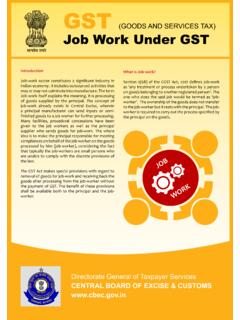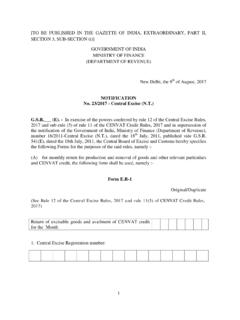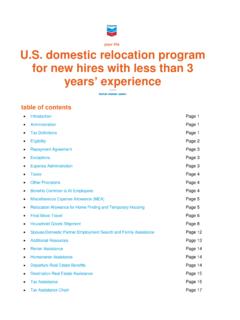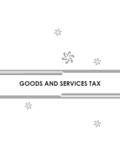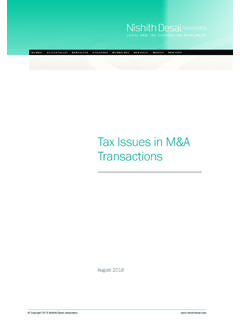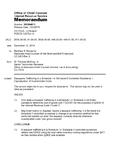Transcription of SERVICE TAX AT A GLANCE INTRODUCTION
1 SERVICE TAX AT A GLANCE . INTRODUCTION . The provisions relating to SERVICE Tax were brought into force with effect from July 1, 1994 vide chapter V of the Finance Act, 1994. It extends to the whole of India except the State of Jammu and Kashmir. Entry 97 of List-I of Schedule VII of the Constitution of India extends the constitutional rights to the Central Government to levy SERVICE tax. The Government of India, through the Department of Revenue administers the levy and collection of SERVICE tax in India. The SERVICE tax being an indirect tax, its administrative control is vested with the Central Board of Excise & Customs (CBEC).
2 In the last two financial years 2014-2015 & 2015-2016, the total revenue collection from SERVICE tax was Rs. 168132 crore & Rs. 211456 Crore (flash-figures) respectively, which shows a commendable growth from revenue collection of Rs. 407 crore in the financial year 1994-1995. The budgetary target of revenue collection in this financial year 2016-2017 is Rs. 231000 crore which is about 14%% of the total tax collection target of Government of India. To begin with, SERVICE tax was introduced on 3 services namely Telephone Services, Non-Life Insurance Services and Stock Brokers' Services which gradually increased to 119 services.
3 From 1 July 2012, the concept of taxation on services was changed from a Positive List of services approach to a 'Negative List regime'. This changed the taxation system of services from tax on the specified services to tax being levied on all services, other than those mentioned in the Negative List or which were exempted by a notification. STATUTORY PROVISIONS. 1 SERVICE has been defined comprehensively under section 65B(44) of the Finance Act 1994;. 2 Presently, all services including declared services, other than those specified in the negative list, or otherwise exempted, provided or agreed to be provided in the taxable territory (India except the state of Jammu and Kashmir) are subjected to SERVICE Tax at the rate of 14%.
4 In addition Swacch Bharat Cess @ is also leviable. In addition 1-6-2016 Krishi Kalyan Cess @ is also leviable 3 To remove any ambiguity certain activities have been specifically defined as services . and are referred to as declared services (Sec 66E of the Finance Act, 1994);. 4 Negative list of services has been provided under section 66D of the Finance Act, 1994;. 5 In addition to the services covered under Negative List, certain services are exempt from SERVICE tax vide Notification no. 25/2012-ST dated ;. 6 Whether a SERVICE has been provided in the taxable territory or not is determined based on its place of provision.
5 The Place of Provision of Services Rules, 2012, specifies the manner to determine the place where a SERVICE has been provided or agreed to be provided;. 7 In most cases the SERVICE provider is liable to pay tax. In certain cases, the recipient of the SERVICE is liable to pay tax, in what is known as the reverse charge mechanism.. 8 The valuation of a SERVICE is done according to the gross amount charged less certain deductions for a pure agent', etc. In some cases abatement in the value is allowed. 9 No SERVICE tax is payable up to the taxable income of Rs. 10 lakh in a financial year, if the turnover of taxable income in the previous financial year is less than Rs.
6 10 lakhs;. 10 All statutory provisions are available on the Department's website 11 In order to avoid cascading effect, the Government has allowed setting off of input taxes paid on inputs/capital goods and input services used for providing taxable output SERVICE . (CENVAT Credit Rules, 2004);. REGISTRATION. For the purposes of case of doing business, the Government of India has made the process of registration of SERVICE tax online;. A person liable for paying SERVICE tax is required to apply for registration online by logging on to the website within 30 days from the commencement of providing the taxable SERVICE or the date of levy on any new SERVICE .
7 Also any provider of taxable SERVICE whose aggregate value of taxable SERVICE in a year exceeds Rupees 9. lakh is required to apply for registration within thirty days of exceeding this amount of Rupees 9 lakh. Based on trust, once a complete application form is filed, registration is granted online within 2 days without prior submission of documents or verification;. Applicant would not need a signed copy of the registration certificate as proof of registration. The registration certificate downloaded from the ACES website would be accepted as proof of registration;. Verification of the documents would be done after the grant of registration.
8 Taxpayer, having more than one premise and having centralized billing/accounting may at his option, obtain centralized registration for all the premises at the place where centralized billing/accounting is located. This application has also to be submitted online. PAYMENT OF SERVICE TAX. Point of Taxation Rules, 2011 determines the time when the tax becomes due for payment for a taxable SERVICE ;. Online payment of SERVICE tax is mandatory for all tax payers. However, DC/AC may allow manual payment on a specific request. Online payment can be made by logging on the website.
9 After , payment of SERVICE tax is on accrual basis. It is on receipt basis for those assessees whose value of taxable services in the preceding financial year did not exceed Rs. 50 lakhs. This facility is available only till the value of Rs. 50 lakhs of taxable services. Individuals/proprietary firm/partnership firm and other specified small tax payers are required to make payment on quarterly basis by the 6th day of the month immediately following the quarter, if the tax is deposited electronically;. In other cases tax is to be paid by the 6th day of the month immediately following the month in which the services is deemed to be provided if tax is deposited electronically.
10 In cases of other modes of payment, due date is 5thday of the month immediately following the quarter or month as the case may be. MAINTAINANCE OF RECORDS. No separate records are required to be maintained and the records maintained by the taxpayer are acceptable to the Department;. Tax payers may issue digitally signed invoices and maintain other records electronically. These records have to be preserved for at least 5 years. RETURNS. The taxpayer are required to self assess their taxable income and pay tax accordingly;. ST-3 returns are required to be filed electronically on on half yearly basis on or before the 25th of the month following the particular half year, 25th of October for the half-year from 1st April to 30th September and 25th April for the half-year from 1st October to 31st March.
